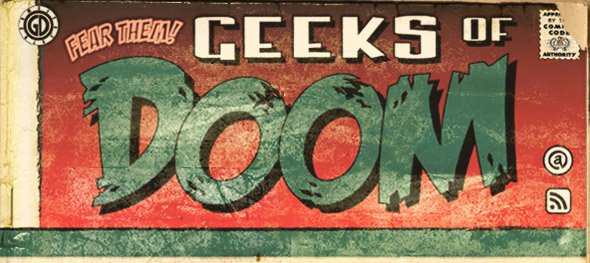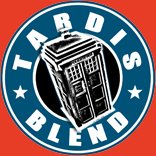
Director Sam Peckinpah, who revolutionized cinema with an alpha male strut that spilled over to his films and characters and was an A-list influence to scores of directors who followed, passed away 30 years ago today.
Cinema had not seen such a spitfire, gritty kind of man as Sam Peckinpah before his films rapidly exploded on screen or in many ways since. Although he wasn’t the first director to infuse a sense of machismo, and not just on the sleeve, but right in the viewers face, a bloody knuckle sandwich to the senses, he remains one of the more well known rebels of Hollywood in an era when studio systems pretty much ruled and dictated final directions. Peckinpah, a tough, hard edged man by nature, had skirmish after skirmish with studios over his final visions, which almost cost him his career. Somehow, however, he didn’t get totally blackballed by the industry, although his reputation was even then, already encased in cement.
A quick list of Sam Peckinpah films are some of the most decidedly machismo films in American history: The elegiac and spanning beauty of Ride the High Country; the bloody balletic lyrical masterpiece The Wild Bunch; the PG rating pushed to the brink thriller The Getaway; the wild, sprawling, fuzzily intense Bring Me the Head of Alfredo Garcia; the almost-dare-say tenderness of a man becoming obsolete in a new era with The Ballad of Cable Hogue; the extremely tough to watch, brutal, and chilling fish out of water in the most violent apex of Straw Dogs; two classic men of Western literature squaring off Peckinpah style in Pat Garrett and Billy the Kid, and the intensity and bleakness of Cross of Iron. Those films and more (and even unsuccessful attempts at comedy with Convoy and music videos like Julian Lennon’s 80s hit “Too Late For Goodbyes”) showcase the expansive talent of the man, and are all highly recommended.

However, for all the machismo and bravado for all the six pack wrenching swagger, the fits, screaming matches, physical violence, hard-nosed drinking that has been reported in countless books either on the man or on cinema, for all that Sam Peckinpah was on screen and off, there was side to him cinematically that could also be manifested as soft, although undoubtedly that was a word that the genuine article abhorred. But he could be, and some of the most successful moments in many of the aforementioned films are the ones that have light touches to them, in which difficult characters can rise above or break through difficult moments with their courage of allowing themselves to be open, something that must have been extremely hard, yet something that must have been in some ways therapeutic for the man himself.
While he may not have been the first to present violence on screen in a much more realistic manner than what had been presented for decades prior as bloodless and in essence unrealistic, the California native was one of the key figures to bring violence on screen in a way that melded deft editing, character staging, music, and physical special effects to create an end result that repelled and mystified viewers, sometimes both at once. Taking heavy cues from Arthur Penn’s 1967 masterpiece Bonnie and Clyde, in which the violence in that picture was presented with the aforementioned descriptions, Peckinpah brought it to its peaks with how he used it in 1969’s The Wild Bunch. When the final cut was released to theaters, there was a firestorm from the media over the violence within the picture, and the superb direction, cinematography, music, acting, and especially editing took a back seat in terms of critical response to the violence. Peckinpah already had the legendary reputation that would follow him forever (he was simultaneously dismissed from two motion pictures a few years prior to The Wild Bunch, Major Dundee, and The Cincinnati Kid respectively) and now, with a new dimension attached to him, as the man who visualizes realistic and to some bombastic violence on screen. A main controversy which got called to attention at the time, was the claim of the overuse of “squibs” in his films, which are tiny rubber casings in which fake blood is inserted into them, and then attached to the actor to then be exploded later by a rig off camera to create the simulation and sensation for the viewer of someone being shot, resulting in blood spurting everywhere. It was this technique, especially in The Wild Bunch, that made the violence harrowing and ultimately horrifying.

Those films done in the late 1960s era, and a few beyond it (mainly the ones mentioned above), remain the golden era of Peckinpah’s work. By the late 1970s when the New Hollywood (coined as such to reflect films which pushed envelopes and broke prior cinematic conventions in various genres) started to erode, a casualty of the beginning of the blockbuster film via Star Wars or Jaws, it made it harder and harder for people like Sam Peckinpah, who crafted films that were the polar opposite of anything even remotely resembling a “blockbuster” (save for The Getaway, which was a runaway success in 1972), to get work. By the time he released his final film, the mild thriller The Osterman Weekend in 1983, which met limited success at the box office (as most of his films did), he was a shadow of his former self in terms of output and critical adoration. When he died of heart failure on December 28th, 1984, most only remembered his fiery output and not-so-urban legend, with most forgetting the challenging and on-its-own-merits-and-terms cinematic work that he had produced. It was akin to acclaimed paintings that suddenly found themselves covered with turpentine-splattered tarps, buried in a dark, damp, dank storeroom.
But as the years have gone on since his death, a new wave of prominence and elegant respect has befallen on the man and his film legend. Directors like Quentin Tarantino and Martin Scorsese have liberally used sequences in their equally stunning works that have given homage and have included imitative forms of high flattery to Peckinpah. It’s easy to see why. Sam Peckinpah represented a film director unlike others; his vision really was worth its weight in salt and dirt and spit and blood, not gold. Gold was the end result. But his vision took heavy masses of metaphoric yokes and boulders on his ravaged back to come to life and made films that actually tore one’s cinematic muscles in doing so, and parlayed the word “difficult” into a tool that somehow became a positive implement. It is, in some bizarre yet noble and respectful sense, a testament to the man and his immense visionary scope and range. In essence, Sam Peckinpah was someone who really bled for his art.

Sam Peckinpah isn’t for everyone. He never was. That was part of his appeal and charm in many ways. It’s almost as if he forces the viewer to metaphorically engage in a bare-knuckled fight, a kind of “I dare you to watch this” swagger. Those who can take it receive a mixture of cinematic artistic beauty of a canvas painted in blood, like slitting one’s wrists to create a Monet. His films are like digesting barbed wire, they don’t go down easy, they stick with you, they burn inside one’s cerebellum, like almost branding it with a red hot poker. In short, it’s what makes the work of Sam Peckinpah and the man himself, ultimately, unforgettable.









No Comments »
No comments yet.
RSS feed for comments on this post. TrackBack URL
Leave a comment